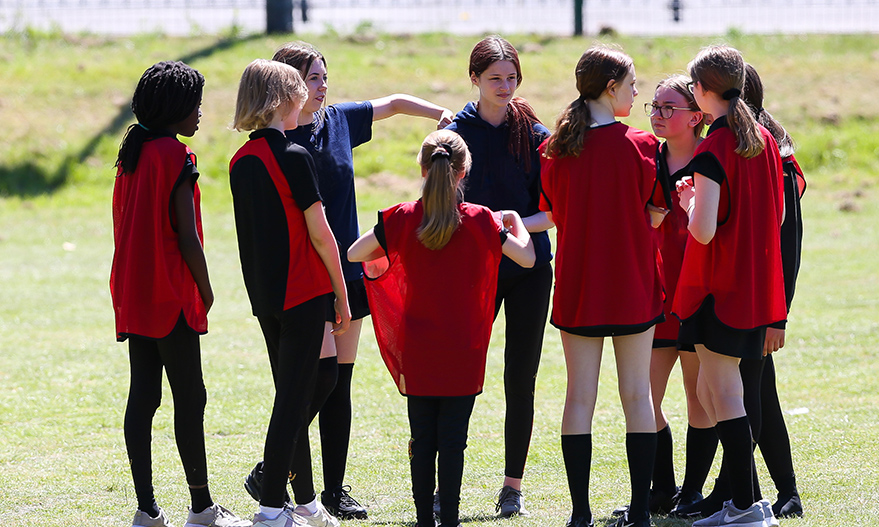
How to create a good environment for girls’ football
- The Boot Room
- 12 August 2022
We explore simple ways to welcome players to your sessions – especially if they’re new to the game.
GIVE YOUR PLAYERS CHOICE AND A VOICE
This is about allowing your players to make their own decisions. It also involves encouraging them to speak their minds in sessions.
A great way to build this into training is to arrange parallel activities of varying difficulty. Then, encourage players to navigate their way through the games. Your team get to choose where they get involved and for how long. And, by giving them ownership, you create a session that’s accessible to players – whatever their level of ability.
EXPLAIN YOUR APPROACH
When your players know what you’re doing (and why), they’re more likely to engage with your session.
At the start of training, explain what you want to achieve and how you plan to get there. Then, as the session progresses, check in with players and make sure they understand what they need to do. Finally, before you leave, take the time to debrief as a team. For example: did you meet your aims? What went well? What could you improve for next time?
BE AN ACTIVE LISTENER
This means listening to understand – rather than respond.
When communicating with players, make sure you:
- face the individual or the team
- show that you’re listening (e.g. nod your head)
- don’t interrupt or start planning what to say next
- ask questions to clarify meaning – and summarise your understanding
- take note of non-verbal cues, such as tone of voice and facial expression.
GET TO KNOW YOUR PLAYERS
To create a session that engages your team, you need to get to know them as people. After all, what’s fun for one person might not be fun for someone else.
By getting to know your players, you can create training that meets their needs and keeps them coming back. At the start of a season, get your team to complete questionnaires about themselves and their interests. Then, as your sessions progress, keep tabs on the little things. For example, who loves to chat about their pets? Who’s been on holiday? Who’s quieter than usual?
Remember: your players should be at the heart of everything you do.
PROVIDE EFFECTIVE FEEDBACK
Maybe your team performed really well during training – or maybe there’s something they need to work on. Whether your feedback is positive or more on the constructive side, make sure it’s:
- regular
- specific
- supportive or probing
- delivered in the moment (if appropriate).
Another tip is to use role models. Encouraging players to consider the behaviour of players like Ella Toone and Nikita Parris can help them relate to your feedback.
MAKE TIME TO CHAT
Never assume that your team attend training just to play football.
Sessions offer a chance to connect with others. They’re a great way for female players to make friends, build confidence and establish a sense of belonging.
With this in mind, make sure your training includes the opportunity to socialise. Let your players pick teams, organise different games and rotate between groups. This provides the chance to catch up with people they know – and build relationships with those they don’t.
For more tips on engaging new female players, check out this webinar.


